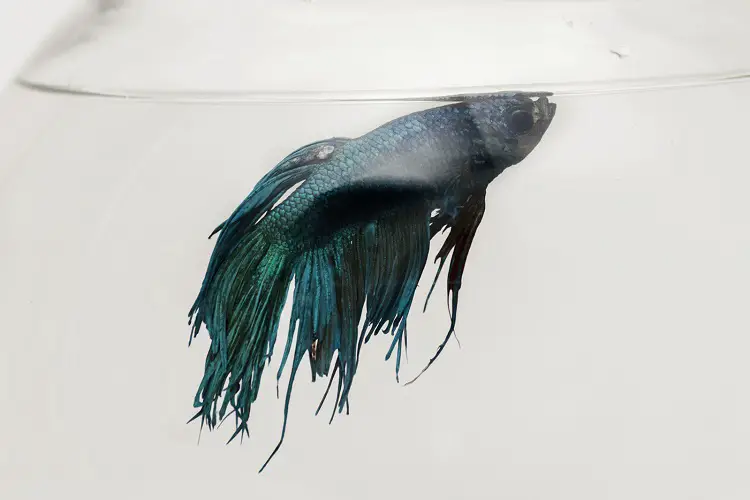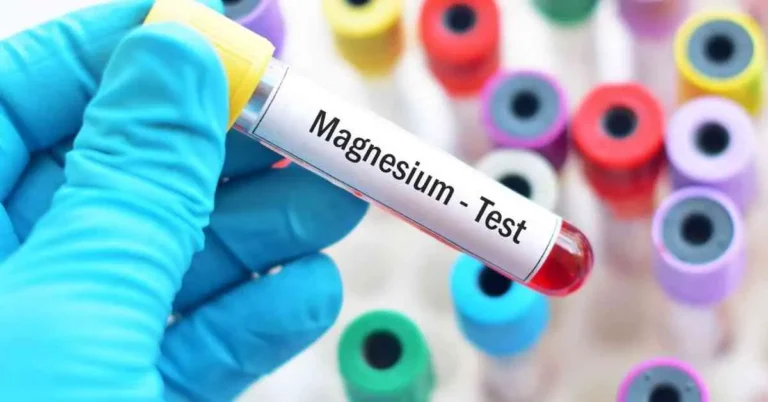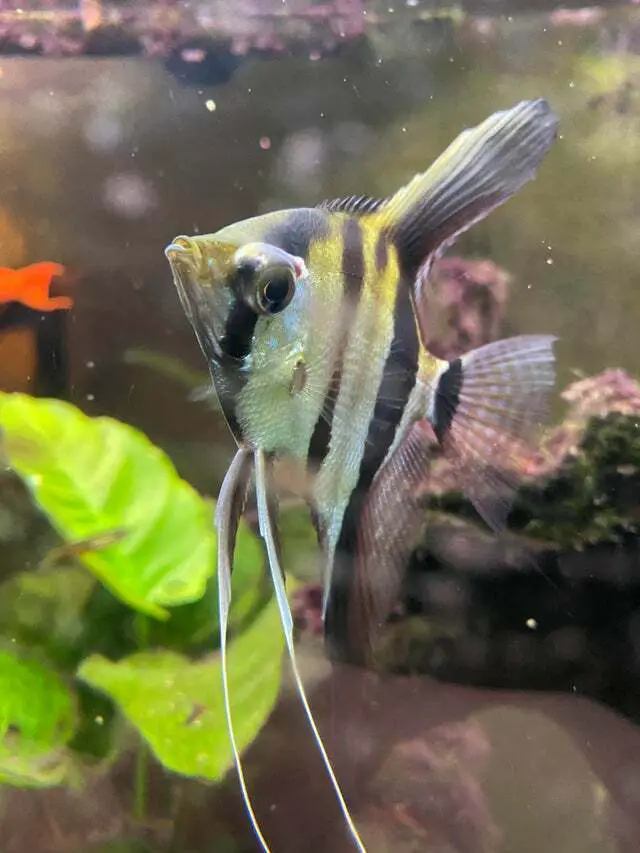Betta Fin Rot vs Fin Loss
Betta fin rot and fin loss are two common issues that can affect betta fish. Fin rot is caused by a bacterial infection which causes the fins to become discolored, frayed and deteriorate. Treatment involves antibiotics or other medications to rid the tank of any bacteria.
Fin loss occurs when fins have been torn due to trauma from fighting with another fish, being stuck in decorations or even nipping at their own fins out of boredom. Treatment for this involves changing water regularly and adding some stress coat medication as well as making sure there are no sharp objects in the tank that could cause damage to their delicate fins. Both conditions can be serious if left untreated so it’s important to keep an eye on your betta’s health and make sure they stay healthy!
Betta fin rot and fin loss are two very different issues. Fin rot is a bacterial infection, caused by poor water quality or stress, that causes the edges of the fins to break down and become frayed. Fin loss can be caused by many things including improper nutrition, damage from other fish or aggressive tankmates, and even old age.
While both are serious conditions that should be addressed with appropriate medical care, it’s important to distinguish between them in order to provide your betta with the best possible treatment plan. If you think your betta may have either issue, it’s best to consult an experienced veterinarian right away!

Credit: badmanstropicalfish.com
How Can You Tell the Difference between Fin Rot And Fin Damage?
When it comes to fish health, diagnosing the difference between fin rot and fin damage can be tricky. Fin rot is a bacterial infection that affects the fins of a fish, while fin damage occurs when the fins are physically compromised due to physical or environmental factors. The two conditions may appear similar at first glance; however, there are some key differences you should look for in order to determine which condition your fish has.
Fin rot typically manifests as darkening or fraying of the edges of the fins, along with redness and swelling around them. The edges of damaged fins will also often appear darker than normal but without any other signs such as redness or swelling present. Additionally, damaged fins tend to be more jagged compared to those affected by fin rot which usually display smooth edge wear instead.
If you suspect your fish has either condition it’s important that you take steps towards treatment right away in order to prevent further harm from coming to your aquatic companion.
Will Betta Fins Grow Back After Fin Rot?
Yes, betta fins can grow back after fin rot. Fin rot is an infection that causes the edges of the fins to become frayed and discolored. This can be caused by poor water quality or a bacterial infection in your tank.
The good news is, it’s treatable with antibiotics and careful monitoring of tank conditions. Depending on the severity of the fin rot, it may take some time for your betta’s fins to heal and grow back but they should eventually regrow if treated early enough. It’s important to maintain clean water in your tank and pay attention to signs that could indicate fin rot so you can catch it early before it has a chance to worsen – this will help ensure your betta’s fins have the best chance of growing back healthy!
Is It Normal for Betta Fish to Lose Their Fins?
Yes, it is normal for betta fish to lose their fins. This can happen for a variety of reasons including injury, disease, or stress. It’s important to keep an eye on your betta’s fins and overall health in order to catch any potential issues early on.
Injury can be caused by overcrowding in the tank, sharp objects or decorations inside the tank that could cause damage to the finnage of your fish, or even fighting with other fish if they are not kept alone. Disease is another common culprit when it comes to fin loss in bettas; some examples include bacterial infections such as Neon Tetra Disease (NTD) and fungal infections like Saprolegnia fungus. If you notice any discoloration or tissue growths around your betta’s fins then it may be time for a trip to the vet!
Lastly, stress can lead to fin loss due to increased levels of cortisol hormones within the body which breaks down proteins that make up healthy fins over time – this usually occurs from inadequate water quality parameters such as ammonia and nitrite concentrations being too high. Keeping an eye out for these signs will help ensure that your beloved pet lives a long and happy life!
How Do I Know If My Betta Fin Rot is Healing?
If you suspect your betta fish is suffering from fin rot, it is important to take the necessary steps to treat the condition as soon as possible. However, once treatment has begun, how do you know if your betta’s fin rot is healing? One of the most obvious signs that your fish’s fin rot is improving will be a decrease in the amount of discoloration and fraying around its fins.
You should also pay attention to any changes in behavior; if your betta begins swimming more actively than before or shows an increase in appetite, this could be a sign that their body is healing itself.
Additionally, make sure you are monitoring water quality closely – clean water will help promote healthy bacterial growth which can aid in recovery.
Finally, keep an eye out for any new signs of infection or unhealthy behaviors such as lethargy or loss of appetite which may indicate that further medical intervention is needed.
With regular care and observation, your betta should begin showing improvement within a few weeks!
How to Cure Fin Rot the EASY Way!
Betta Fin Rot Treatment
Betta fin rot is a common bacterial infection that affects the fins of betta fish. Treatment involves water changes, antibiotics and increased aeration. Antibiotics are most effective when used in combination with frequent water changes to remove any decaying material from the tank.
Increased aeration can also help by promoting good circulation and oxygen levels in the tank which will support healthy tissue growth and healing. Proper care, diet, and environment all contribute to prevention; however if your fish does develop this infection it is important to seek treatment quickly for best results.
Betta Fins Shredded Overnight
If you wake up to find your betta fish’s fins shredded overnight, it could be a sign of poor water quality or an underlying health issue. Poor water quality can cause fin rot and other bacterial infections that lead to the shredding of fins. If possible, check your tank parameters such as pH, ammonia levels and nitrates for any abnormalities.
It is also important to make sure the temperature in the tank is within optimal range for betta fish (76-82°F). Treating any illnesses or making adjustments to improve water conditions will help reduce stress on your fish and encourage regrowth of their fins.
What Does Betta Fin Rot Look Like?
Betta fin rot is an unfortunately common issue that can affect these popular aquarium fish. It appears as a white, frayed edge to the fins, which will eventually become tattered and shortened if left untreated. The skin may also appear discolored or slimy in affected areas, and your Betta may become less active than usual due to discomfort.
If you suspect your Betta has fin rot, it’s important to take action quickly so that they are not subjected to long-term suffering.
Betta Fin Damage from Filter
Betta fish are particularly vulnerable to fin damage from filters due to their long, flowing fins. If the flow of water is too strong, it can cause the fins to tear and fray. To prevent this type of fin damage, use a filter with adjustable flow or place some sort of barrier (such as aquarium plants) around the intake tube to reduce the current.
Additionally, try using an air-powered sponge filter instead of a traditional one; these are much gentler on betta fins.
Betta Fish Fins Look Ripped
Betta fish fins look ripped for a variety of reasons, including improper water conditions, aggressive tank mates, or fighting with other bettas. Improper water conditions can cause fin damage due to the lack of oxygen in the water as well as toxic levels of ammonia and nitrates. Aggressive tank mates such as larger fish can also lead to damage due to physical contact between species.
Lastly, male bettas are known to fight among themselves which can result in ragged looking fins if not monitored closely by their owners.
Betta Fin Regrowth
Betta fin regrowth is an important process for betta fish owners to understand. Betta fins are relatively fragile and can be easily damaged from fighting, improper handling, or a variety of other reasons. Fortunately, if properly cared for, bettas can regrow their lost fins over time with the right environment and nutrition.
To facilitate this process, it’s important that betta keepers provide their fish with plenty of clean water and quality food sources containing protein and vitamins essential for healthy fin growth. Additionally, providing your betta with hiding places in its tank may help reduce further damage to its fins as it recovers.
Do Betta Fins Grow Back?
Betta fins can grow back if they are damaged, but it will take time. Depending on the severity of the damage, it may take anywhere from a few weeks to several months for them to fully regrow. During this time, you should provide your Betta with plenty of nutritious food and keep their water clean and well-oxygenated in order to aid in the healing process.
How Long Does It Take for Betta Fins to Grow Back?
It typically takes betta fins about four to eight weeks to regrow after damage. However, the amount of time it takes for a betta’s fins to grow back will depend on the severity of the fin damage and the fish’s overall health. If your betta is well-fed and their water is clean and properly maintained, they should be able to regenerate their fins relatively quickly; however, if your betta has underlying health issues or its environment isn’t optimal, then it may take longer for its fins to regrow.
Conclusion
In conclusion, Betta Fin Rot and Fin Loss are two very different conditions that can affect the health of your betta fish. While both may present with similar symptoms, each condition should be treated differently to ensure a full recovery. If you notice signs of either fin rot or fin loss in your betta fish, it is important to consult a veterinarian experienced in treating tropical fish diseases for proper diagnosis and treatment.
With prompt attention and appropriate care, your beloved betta can make a complete recovery from both illnesses.






